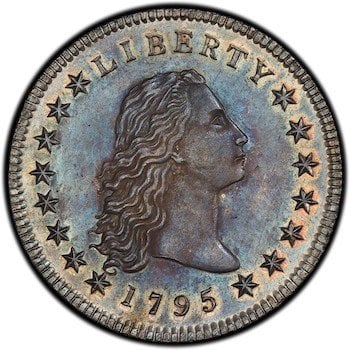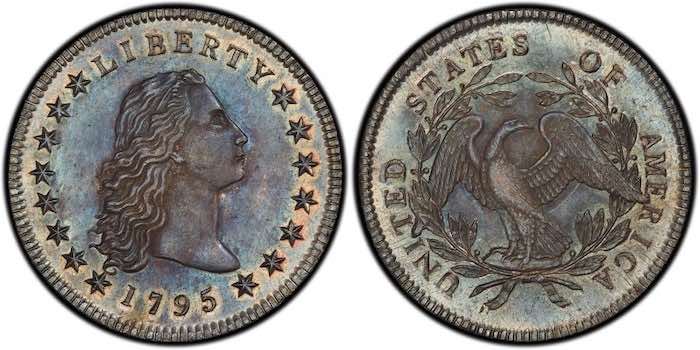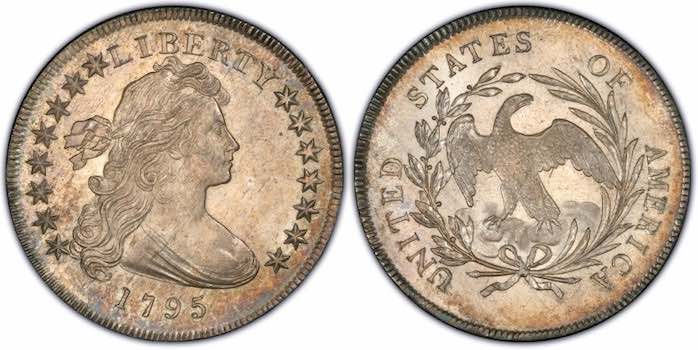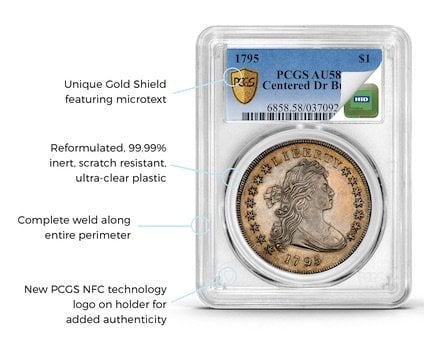Ed. note: This article is periodically updated to reflect the current price of most valuable coins.
In Coleccionistas de Monedas, we fight against the misinformation surrounding the world of coins on the Internet. For this reason, our articles are entirely written by people, not AI or other automated systems. Additionally, we link to all sources and references for coin prices, with the goal of providing you with real, updated, and reliable information.
How do we verify coin prices and values?
At Coleccionistas de Monedas, we are committed to providing accurate, trustworthy, and well-sourced numismatic information. We understand that articles about coin values can influence important financial decisions, which is why we apply a clear and rigorous methodology to estimate prices.
Sources used
- PCGS Price Guide: The official pricing guide from the Professional Coin Grading Service.
- NGC Price Guide: Updated valuation system from the Numismatic Guaranty Company.
- Heritage Auctions: Database of real auction sale prices.
- Red Book: Printed guidebook with historical pricing by grade.
- eBay Sold Listings: Only completed sales are considered, not asking prices.
Validation process
- Price review by condition grade using standard scales (MS, AU, XF, VF).
- Verification of varieties and errors through multiple data sources.
- Expert consultation when prices significantly deviate from the norm.
- Regular updates to reflect current market trends.
Important disclaimer
The values presented in this article are for reference purposes only. Final coin prices can vary significantly depending on authenticity, grade, and selling context. We strongly recommend having your coin certified by a professional service such as PCGS or NGC before selling or purchasing it as an investment.
In 1794 began the minting of one of the most valuable silver dollars. This had in its design the Liberty symbol with the loose hair waving in the wind. This is the reason why it is nicknamed the Silver Liberty Dollar or Flowing Hair Silver Dollar. The 1794 dollars are extremely rare and valuable. In fact, the most expensive coin in history is a dollar from that year, priced at over $10,000,000.
Thus, in this article, we focus on those minted in the following year, 1795. The latter were minted in greater numbers and kept the original design until October of that year, which was changed for another one as we will see later on. We will also solve issues such as identifying a 1795 Liberty dollar; variants and their prices; how to know if it is true; its main frauds and in case it is a fake, its value.
1795 Silver dollars Value Chart
Coleccionistasdemonedas.com Estimated Value of 1795 silver dollar is:
| Grade | MS4 | MS20 | MS40 | MS60 | MS65 |
|---|---|---|---|---|---|
| 1795 Flowing Hair Silver Dollar: 3 leaves | $2.400 | $5.000 | $10.500 | $60.000 | $350.000-500.000 |
| 1795 Flowing Hair Silver Dollar: 2 leaves | $2.500 | $5.500 | $13.500 | $80.000 | $350.000 |
| 1795 Flowing Hair Silver Dollar: Silver Plug | $5.000 | $17.500 | $27.500 | $134.270 | $1.595.568 |
JUMP TO SECTION
What is the value of 1795 Silver Dollars?
An authentic 1795 dollar in high conservation is highly valued by collectors and usually reaches high prices. We must also remember that in 1795 there are two different models, the Flowing Hair Silver Dollar and the Draped Bust Dollar with differences in their designs and prices.
Identify your flowing hair dollar
On its obverse side, we can recognise the Liberty bust in the shape of a woman’s head with loose hair. Above her head appears the legend “LIBERTY“, and below it the year of issue, “1795”.
On its back, an eagle appears in the center with laurel leaves wrapped around it. With a circular legend surrounding the design, appear the inscription “UNITED STATES OF AMERICA“.
How many 1795 silver dollars exist?
Determining how many 1795 silver dollars still exist today is challenging because many have been lost, melted, or destroyed.
However, it’s estimated that approximately 160,295 1795 silver dollars were minted by the United States Mint, with two different varieties: the Flowing Hair and the Draped Bust. The Flowing Hair variety was only produced briefly before being replaced by the Draped Bust variety, which continued to be minted until 1803.
Today, surviving examples of 1795 silver dollars are highly sought after by collectors and can be valuable. Rarity and condition are the two primary factors that affect the coin’s value, with some examples selling for hundreds of thousands or even millions of dollars at auction. However, the exact number of surviving coins is still being determined and difficult to determine.
How much is a Flowing Hair Silver Dollar?
There are two 1795 flowing hair dollar varieties. They can be differentiated by the leaves of the design on the back, located under the eagle’s wings – specifically, whether there are two or three.
In addition, there is another much more valuable variant, which includes a tap for a plug to adjust the weight.
Draped Bust Dollar Value and Prices
As for the second design from 1795, the Draped Bust Dollar, it has a lower price, but it is still an extremely interesting and valuable coin to collect.
On the obverse side the bust changes its design, that even though it is again the Freedom in the symbol of a woman, the hair is slightly gathered in the middle of the head. Instead of having a naked bust, in this case, it has a mantle covering it.
The reverse side repeats the same design, with the same legend included, referring to the country of issue, the United States of America.
It has, in this case, two variants, one with the bust aligned and the other not. The price of one with respect to the other is not too far away in the graduations of the first MS ranges, but it can be noticeable in the higher ones.
| Grade | MS4 | MS20 | MS40 | MS60 | MS65 |
|---|---|---|---|---|---|
| 1795 Draped Bust Dollar: Centered | $1.900 | $4.750 | $8.500 | $45.000 | $400.000-500.000 |
| 1795 Draped Bust Dollar: Off-Centered | $1.900 | $4.750 | $10.000 | $53.000 | $800.000 |
Of course, we have to take all prices as estimates, as they can vary quite a bit depending on the situation.
How do you identify a 1795 Liberty Dollar and how do you know if it is genuine?
As we have seen, these are very valuable coins and are therefore counterfeited by swindlers, which is why we have to look at certain details to ensure that we are dealing with an authentic Liberty Dollar from 1795.
#1 The weight, material and measurements
Regardless of the design, this year’s dollars weigh 27 grams and may vary slightly, but no more than 0.1 or 0.2 grams.
The closer the dollar is to 27 grams, the more certain we are of its authenticity.
In addition, the diameter of these dollars should be 39.5mm.
Its content of approximately 90% silver makes it impossible to stick to a magnet, so if it is attracted to one, it is a fake.
#2 Pay attention to details
Forgeries may not be identical to the originals in appearance, and in fact, they often have some error that can tell you it’s a fake.
For this reason, my recommendation would be to carefully compare every detail of your currency with one you know to be 100% authentic (for example, images from internet auctions). Don’t be casual about counting the stars, number of leaves or even the eagle feathers on the back; we’re talking about a lot of money at stake.
There are very complete guides that I recommend for comparing authentic coins with their main counterfeits. They will indicate certain signs to look out for, such as marks on the neck, the shape of the stars, etc.
#3 Verification capsules
Indeed, grading a coin is not that easy. Independent companies that verify your coins and encapsulate them as a certificate of authenticity are widespread in the North American numismatic market. This option is to resort to TPG (Third Party Grading Service).
This is the safest method if you are not an expert on your coins when buying or selling them. Furthermore, it not only guarantees that it is authentic but also gives you an objective graduation, which along with rarity is what the value of a coin depends on most.
If you have a coin that you have doubts about, you can contact these companies; and being a high-value coin, you can send your coins and pay to certify them to be sure that it is not a fraud.
#4 Other appraisers and auctions
Another method is to look for professional experts in numismatics to help you solve your doubts without having to send them to be encapsulated.
One of the quickest and easiest methods is to buy and sell your coins through auction companies, which will verify and price them, offering you guarantees on their purchase.
One precaution to take before buying a coin at auction is that there is always a commission. This is usually between 15% and 20% of the winning price at which you bid. In addition, the price of shipping may not be included, so all those extra expenses should be considered as part of the price of your new numismatic acquisition.
If you have any doubts about the authenticity of a valuable coin I would recommend the last two methods, as they are the safest.
My coin is fake, what is the value of the copy?
If by some circumstance a copy or counterfeit of a dollar from 1795 falls into our hands, I am afraid it is not usually worth more than a couple of dollars. You can either keep it until you get a real one or sell it on with the warning that it is a fake.
My recommendation against this type of fraud is to stop the circulation of this currency among collectors and not to make a business out of cheating other numismatics collectors.
A little history about the first Silver Dollar
One reason to start collecting coins could be their rarity or great economic value, however, historical value could be the greatest benefit in numismatics.
In the United States of America, the “8 reales españolas” coins were used as the standard reference currency until 1794. The reason is that these were accepted all over the world and many countries started to copy them.
The US was no exception and, in fact, these dollars we have talked about are the same size and weight as the famous Spanish “pillar dollar”. The US dollar symbol itself ($) is inspired by the columns of the 8 Spanish reales fused with the standard that is also in their design.
As this Spanish silver coin was the first to circulate as an official U.S. currency, many American collectors consider it part of the numismatic history of North America. They are therefore highly valued in the country and are part of the collections of many numismatists.
We must remember that these silver coins were minted varying the design and certain characteristics from 1794 to 1935. However, one dollar coins are minted even today, so we can extend our collection as much as we want, taking into account that the current coins do not have any silver content.
References and sources
- Heritage Auctions, “What’s My Coin Worth?, https://coins.ha.com/ref/price-guide.zx”
- NGC Coins, “NGC Price Guide, https://www.ngccoin.com/price-guide/united-states/”
- The Official Red book 2025, “A Guide Book of United States Coins, https://g.co/kgs/8TcE3yq”
- Wikipedia, «Listof most expensive coins, https://en.wikipedia.org/wiki/List_of_most_expensive_coins”







